Nation Completes Recovery
Nation Completes Recovery
This seems like an inappropriate security question pic.twitter.com/JvR6ik78cT
— Hayley Hudson (@hayhud) June 26, 2014
But then consider this: Should something horrible or memorable happen tomorrow, your answer to the equivalent question in 14 years will probably be, “I don’t know, on the internet?” [Via]
Dov Hates Dust: When the CEO Comes to Town
by Corinna Kirsch
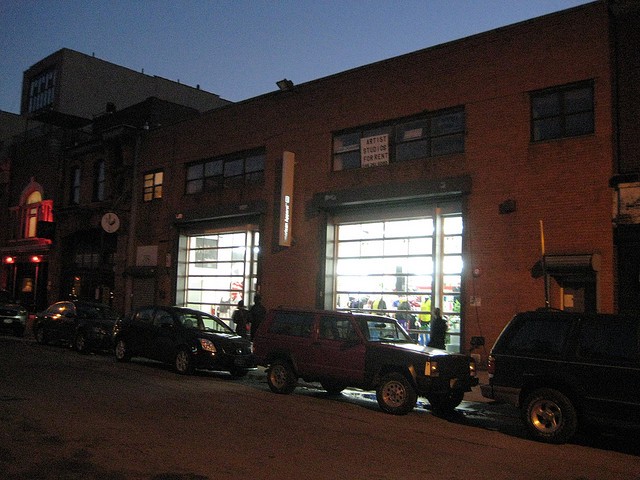
I used to work at American Apparel, the one in Williamsburg. Internally, it’s called NY5. Every so often a mid-morning, brunch-faring couple would ask how business was going.
Business was bad. So bad that I’m almost wondering why American Apparel continues to exist. According to the Los Angeles Times, it’s lost nearly $270 million over the last four years; in the process, it’s accumulated more than $200 million in debt.
But I’d shrug, and mention one of our two-for-one sales. We always had two-for-one sales. Eventually they became three-for-two sales, but it’s less sing-songy; as you can imagine, it didn’t catch on.
When I started working in Williamsburg in 2011, the condo rush was peaking as the rich swooped in to buy rooms at developments like The Edge — a glass-and-steel tower with a “plunge pool,” chef’s kitchens, and a nineties-and-neon-pink-tinged marketing campaign — just a few blocks away. The East River ferry service had recently launched, too. Nobody I worked with took the ferry — or lived nearby, for that matter. The only ferry regulars I knew were French exchange students living off their short-term visas and pleasant exchange rates.
Dov Charney and American Apparel tried to find financial salvation here, but the type of customers they needed, the young and sort-of broke who used to shop at American Apparel, had already left the neighborhood. Yet, during the two years I worked there, talk about expansion was always in the air. In 2012, NY5’s fitting rooms were torn out to make room for more clothing racks. The store used to look like a boutique, but no matter; maybe putting more leggings out would juice revenues. Then, in 2013, NY5 became a flagship store. That just meant that we started renting out the back part of the building to expand the store, hoping to attract more customers. I was told that rent had increased to $40,000 a month. It’s around this time that, from what I’d heard, Dov Charney started haunting the stores.
We were never told exactly when Dov Charney and his corporate crew would drop by unannounced, but they would. “Dov hates dust,” my manager told me at least once in preparation for increasingly frequent corporate audits. To combat the grime, we swiffered the racks throughout the day, all the while telling our customers that they had the best asses in Brooklyn. Multi-tasking was key when trying to make sure visitors weren’t stealing our disco pants; weren’t doing coke in our fitting rooms; and weren’t drunkenly breaking any of our mannequins. We had to meet hourly goals or someone would get “written up” or shifts would be cut. (Eventually, the focus on individual sales girls as a tool to increase revenue took all sorts of unusual turns: At one point, employees had to try to sell AA-brand nail polish to local salons, which didn’t go over very well, if only because some of the polishes went on thick as pudding.) I was paid eight dollars an hour — and I have a Master’s degree.
The night I met Dov, I was about to head home. It was Saturday night at 10 p.m., but then a lumberjack-type of guy walked in with two young women. He started taking cell phone pics of the dust he scraped off the clothing racks.
One of the girls with tattoos got written up; you’re not allowed to be visibly inked if you’re at American Apparel. You’re also not allowed to wear anything that’s not AA when at work. This includes not just clothes, but also socks, shoes, nail polish, and jewelry. Makeup must be “minimal.” Only then are you “on brand.” As a punishment for our dust, tattoos, and whatever else, we had to stay open an hour later; other employees from corporate stayed after Dom left, to make sure that our store looked perfect by American Apparel standards.
I never talked to him. He never looked at me, and maybe I felt slighted. Shortly afterward, I started having nightmares about Dov. In one hazy dream, we made out in the basement, in back stock, surrounded only by the plastic Tupperware-type containers where we kept all the clothes. It was a lonely world, just the two of us in a sci-fi-bomb-shelter situation, me and this desperate man whose dreams produced not just American-made T-shirts and V-necks and knee-high socks, but part of the very cultural shift that had made the neighborhood inhospitable to his store and the people who might have once shopped in it.
A few weeks later, I got a copyediting job and quit. I stopped going to Williamsburg, really, and haven’t been back to NY5 since.
Corinna Kirsch is a senior editor at Art F City.
Photo by Josh Kramer
New York City, June 25, 2014
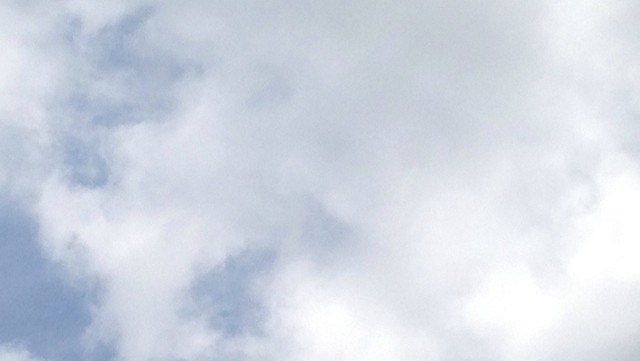
★★★ Plain summer, glaring and bad-smelling. A washed-down stretch of sidewalk under a scaffold stayed wet and made the air around it even more humid. After a few false attempts, the sun finally came on high and hot. A woman stepped out into it and in a few paces shrugged off her suit jacket, indoors and outdoors proving irreconcilable. The heat subsided by late afternoon; children on scooters buzzed the plaza outside the apartment entrance. In the night, flashes of lightning came white through the blinds.
Food Restless
“’You can have the best surveillance system in the world, and the numbers are going to get you,’ said Maxwell. ‘Resistance is going to be there. It will escape notice. And once it occurs at even a low, recognizable level, it’s going to continue to be there.’” — Has your corn been acting suspicious lately?
Stephen Merchant Ponders, What If the Brits Won?
Stephen Merchant Ponders, What If the Brits Won?
by Awl Sponsors
Brought to you by Newcastle Brown Ale
America, as you prepare to fire up the grill and enjoy the fireworks this Independence Day, Newcastle invites you to celebrate Independence Eve on July 3rd, and imagine how great America could have been if Britain won. To help explain further, we’ve enlisted British comedian Stephen Merchant, co-creator of the original British version of The Office. And just like his landmark comedy series, he believes the American version of our country pales in comparison to the British original. In his charming British accent, Stephen makes a convincing case for what could have been the greatest country on Earth: Great Britain 2.
Visit www.ifwewon.com to get a taste of this alternate universe of better comedy, classier curse words and buses that reach for the sky. But most importantly, get a taste of how much more beer Newcastle would’ve sold if we won. Scores and scores of beers.
How to Dehumanize a Terrorist: Give Him an MBA
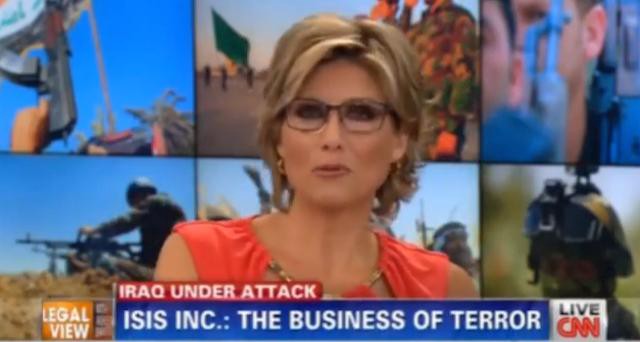
ISIS has swept across Iraq in a stunning show of force, accumulating land and capital at a staggering rate. How, after a decade of American presence in Iraq, can this possibly be explained? What language do we even have for this?
“ISIS: The first terror group to build an Islamic state?”
The face of a balding, middle-aged man stares unsmilingly into the camera. He is dressed in a suit and tie and could pass for a midlevel bureaucrat.
But the photograph is that of Abu Bakr al Baghdadi, who has transformed a few terror cells harried to the verge of extinction into the most dangerous militant group in the world.
“1,083 Assassinations and Other Performance Metrics: ISIS’s Year in Review”
The [ISIS annual report] document demonstrates yet again that Islamist groups overtly committed to eradicating modern, Western influences from Muslim countries often embrace modern, Western business practices in their organizations.
“Selling terror: how Isis details its brutality”
The reports paint a picture of an organisation that analysts say is not so much the ragtag terrorist band depicted by Iraqi officials but more of an organised military structure with a clear political strategy to set up a Sunni sectarian state — and one with several of the hallmarks of a corporate entity…
Deft use of social media has been at the forefront of its campaigning tactics in Syria and Iraq. When it comes to using platforms such as Twitter, Isis is “probably more sophisticated than most US companies,” said Aaron Zelin, an expert on jihadis and fellow at the Washington Institute.
“ISIS Brings Business Acumen To Violent Jihad”
The Islamic State of Iraq and Syria is proving to be both militant and disciplined, borrowing organizational tools from the corporate world to professionalize its operations…
One example: It decided to pay its fighters less than other groups. ISIS calculated that the lower pay will attract men who are more ideologically committed, and are not just in the fight for the money.
Excel spreadsheets and guns? Management theory and ideological extremism? I am fixated on this fixation: That ISIS is well funded and organized is obviously significant, but what makes the concept of its business savvy so fascinating, so unlikely, and so sticky? It’s an odd narrative within which the media is contextualizing a massive, difficult geopolitical event — and one that, to the nearby and the sober, isn’t shocking at all.
“ISIS, and al-Qaeda, for that matter, have always been highly bureaucratic organizations,” Aaron Zelin tells Businessweek. Recall as well the brief period after 9/11 and before the wars in Afghanistan and Iraq, when the administration’s portrayal of al-Qaeda gave it quite a bit of credit — when the idea of a sophisticated “international financial network” supporting international terror attacks entered the American consciousness. In November of 2001, the President described a group of organizations that “manage, invest and distribute funds. They provide terrorist supporters with Internet service, secure telephone communications and other ways of sending messages and sharing information.”
“The entry point for these networks may be a small storefront operation,” he said. “But follow the network to its center, and you discover wealthy banks and sophisticated technology, all at the service of mass murderers.”
But this quickly — very quickly — gave way to a much more durable portrait of al-Qaeda, as a primitive tribe of unsophisticated fanatics with Skype accounts. This was simpler and more effective in wartime: To describe an enemy as a 14th-century anachronism, precluding any and all understanding of reason or motive, robs them of both humanity and power.
So how do you both give credit to ISIS and maintain its absolute otherness? Recast its leaders as corporate raiders! It’s perfect. It’s a type that’s both recognizable and difficult to empathize with; it explains a group’s motivations without requiring you to understand them. It’s a business narrative — a disruption narrative — which is increasingly the dominant type of narrative, laden with clean premises and familiar, if unknowable, forces. It aligns, for a Western audience, the foreign desire for an Islamic state with that inevitable quality of industry: The unquestioning desire for growth.
On Giving Up
“I mostly write out of disgust and dissatisfaction. I want a beautiful life but I’m stuck in this Garbage World with you people. Very slowly, I’m figuring out I probably should not waste any more time on writing. It seems increasingly passive and banal, the whole exercise.” — An interview with writer and self-help guru Ken Layne.
New York City, June 24, 2014

★★★ Variables teetered, rather than striking a balance. Here, in the west, the sky was white; there, in the east, it was blue. There was scaffold shade and cloud shade and sun fading in, or partway in. Humidity made itself felt without being the dominant impression. A man gave himself over to summer with an untucked linen shirt and bouncy linen pants. Suntans were developing, and some had already developed. Toenails were out and done in shiny untrue blues or standard reds. The late afternoon settled into a relatively cool, hazy blue. Street trees tossed their branches. The air in the 1 train car, after the mildness of the platform, clung like a sweat-drenched bedsheet.
A Morning in Isla Vista
A Morning in Isla Vista
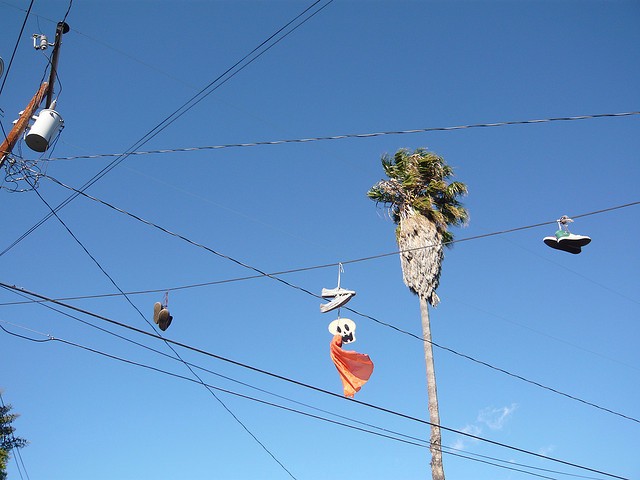
I don’t remember much about that first time I drove through Isla Vista, except that it wasn’t what I had expected. Our parents told us that it had a higher rate of STDs than anywhere else in the country, and that it accounted for one percent of all alcohol consumed in the U.S. Isla Vista, just a dozen exits north on the 101 — a shorthand for danger and debauchery. But it was just beachy and grimy, pleasant and closer to whatever I imagined the real world was supposed to be like. There were palms and eucalyptus trees, and I saw a passed out man face down on a beat-up couch near the sidewalk.
A few weeks ago, I went back. I was supposed to meet a scientist at UCSB. The day we had decided to meet turned out to be a week-and-a-half after a man, a little older than I had been when I first drove up the coast, shot and stabbed 13 people before turning his gun on himself. After the killings, the scientist pushed our long-scheduled morning meeting back into afternoon. “Here trying to figure out what happened last weekend…” he wrote. With that morning free, I found myself wandering around Isla Vista again.
I drove down Camino del Sur, behind two women with blonde hair and long limbs, beautiful in a casual way, on cruiser bikes pedalling slowly side by side, taking up the whole lane — a too-perfect symbol of coastal California. They were chatting, and I watched one lean back and let out a huge laugh. This is where Gwyneth Paltrow went to school, where reality television producers for dating shows scout for contestants among I.V.’s — everyone here calls it “I.V.” — 20,000 residents, always young, always new, year after year.
After parking, I walked toward Del Playa Drive and, as the name suggests, the ocean. I turned on Sabado Tarde Road, where Elliot Rodger shot and wounded three, then struck two skateboarders with his BMW and shot another. As Rodger fled down Sabado Tarde, he exchanged gunfire with county sheriffs, just a stone’s throw from Little Acorn Park, where a mosaic of sunflowers stands as a memorial to the four victims of another vehicular rampage, back in 2001. Del Playa was quiet. Sabado Tarde was, too. A few bikers. A skateboarder. An old, scruffy man in army fatigues standing silently in the shade of an electric pole. What is it I hoped to see? Someone threw flower petals at the foot of the building with bullet holes. A banner said, “What we do now is up to us.”
I walked to the Embarcadero de Mar, which curves around another little park, to Freebirds, a burrito franchise that started here, but is very popular throughout Texas. Outside, more bikes, parked along the sidewalk, students splayed over wooden tables in the sunshine, a breeze off the Pacific. I approached four students, and asked them if they could talk for just a second. “I’m a reporter,” I said. “Who are you with?” one of the guys asked. I told him the name of the publication that had paid for me to be there to meet the scientist that afternoon. I said I grew up down the coast and then something like, “I don’t think I’ve ever understood I.V. You probably can’t unless you live here.”
“That’s right, that’s right,” another guy, in Vans slip ons, said. He said that after the killings there had been a memorial paddle out. Surfers, and a lot of other people too, waded into the sea and sat up on their boards, grasping their neighbors’ hands while watching the setting sun. He said exactly the words a person thinks he or she should say to the media, all the words that aren’t ugly or exact. He never said “stab” or “shoot” or “kill.” The “tragedy” had its “victims,” the community had “rallied,” and “would be made stronger for it.” For a moment, I felt like we were actors. I was playing the role of the dutiful reporter, nodding sympathetically, taking down bits of what he told me in my notebook, while he described the feelings he was supposed to feel in the order he was supposed to feel them. Sadness, followed by fortitude.
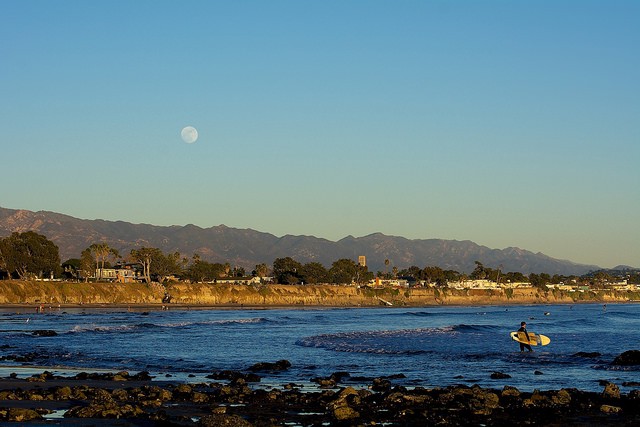
Inside of Freebirds, I got a burrito and found a copy of the Santa Barbara Independent, the alt-weekly where I’d worked for two summers. In it, a student, Hannah Mendoza, had written an essay about I.V. She’d come here from England. “The kindness of this community astounded me…It took me from a scared, lonely freshman thousands of miles away from home to a passionate advocate for our little town and all its beauty.” I wrote down the headline: “Collective Heartbeat in Isla Vista Strengthens.” There were bleaker outlooks, too. My old boss, Nick Welsh, wrote in his column, “Angry Poodle Barbecue,” that the unincorporated I.V. was “a bastard stepchild of a town disowned and disinherited by any and all responsible parties.” There had been “two riots in five months. Two gang rapes,” he wrote. “I don’t know…maybe somebody should do something.” A different article had the aside: “It’s important to note that Isla Vista is a community that sucks residents in and spits them out just a few years later.”
Near the end of Mendoza’s essay she had written, “To the outside world, we are a town of riots, tear gas, beached bodies, and binge drinking. We seem the perfect paradox: a coastal paradise plucked straight from a movie set yet marred with the crime rate of an inner-city ghetto.” And yet, “Days after the event that shook our town, a sense of frailty still fills the air, but it is tinged with something else, too. Now, words seem gentler, the smiles longer, the embraces tighter.”
After my burrito, it was time for the meeting, so I found my car and drove across campus. I waited outside the scientist’s office in the shade until the ocean breeze chilled me into moving into the sunlight. He arrived and we had our chat. At the very end, I asked him how he was doing — how the campus was holding up. He paused and took a deep breath. “It’s just that…” he said. Then another breath. “Just that no one can imagine such a thing happening here, in such a place.” Another pause. “You know, two of the girls were in that sorority, they were friends with the girls who died, and they came to class and seemed…” his eyes welled up, then he looked up at the ceiling and said, “I think there’s been some healing, and there will be a lot more. But everyone’s shell-shocked, you know? That this could happen here, where it’s so nice, where it’s so beautiful.”
On the way back to my rental car, I squinted out at the paddle boarders beyond the kelp paddies and noticed the water boiling — small fins breaking through the light chop: a pod of porpoise, moving east along the coastline and out to sea. I watched them until I could no longer see fins. In the car, I heard the NPR news reader announce that there had been shootings at Seattle Pacific University. Police were in pursuit of a gunman. I pulled over and checked Twitter for any scrap of information. When I couldn’t find any new news, and NPR broke to a different segment, I changed the station to 91.9, the campus radio, KCSB. An old Isley Brothers tune, “Put Yourself in My Place” was on: Put yourself in my place/ If only for a day/See if you can stand/The awful emptiness/I feel inside. I imagined, now, a great sweeping wave that was outrage. Then another wave — sadness. And another — despair. Wave after wave pounding up against the shore, across the continent, the ocean sucking in and spitting out new horrors for the next day, and the next day, and the next.
After the Isleys, Nina Simone came on. “Feeling Good.” I listened to the way she told the birds, and the breeze, and the fish, and the river that they all know how she feels. It sounded so mournful, then the brass came in sinister, in that minor key. Near the end, Nina shouted “freedom is mine, and I know how I feel” and it sounded like a taunt. I waited until the song was over and as I started the car, I heard the deejay say, “That’s it for me.” Her voice was young — a student, almost certainly. “See you in the fall,” she said. Then: “And have a great summer.”
Ryan Bradley is a writer and editor in New York for a little while longer.
Photos by Ryosuke Yagi and Glenn Beltz, respectively
